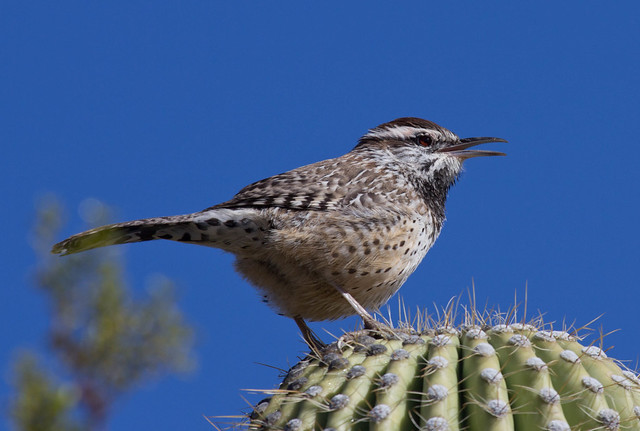24. Limit outdoor water use.

The world is facing a water crisis that is becoming urgent for humans and wildlife. In Australia in 2004, much of the continent’s water was being rationed and reservoirs were being emptied. Due to changing weather patterns and a global warming trend; water contamination from pesticides, excessive nutrients, and other harmful chemicals; and heavier demand by a growing population, this problem is mushrooming throughout the world. As with so many other environmental issues, humans and birds are in this situation together, but we’re the ones with the intelligence and the moral imperative to do something about it.

Growing lawn turf or shade trees in arid areas squanders water. Native plants that are adapted to dry conditions can be more attractive, provide proper habitats for native wildlife, and require much less maintenance. On average, about 35 percent of household water usage goes to tending lawns and gardens; in hot, arid places such as Arizona, it can be as high as 60 percent. Xeriscaping will improve your backyard habitat for native birds, provide you with an attractive yard, and save water.
In areas with periodic rainfall, one way to significantly reduce the amount of municipal water usage by your household is to put rain barrels at the corners of your home under downspouts. Water from rain barrels can be poured into buckets and used to wash cars, water lawns and garden plants, and fill birdbaths and backyard ponds, lowering your bills and reducing demand on local water treatment services. It’s important that rain barrels be properly covered to prevent mosquitoes from breeding in them and that they be emptied within five to seven days of a rainfall to prevent algal growth. Also, you can keep small buckets beside indoor sinks and use them to collect running water that would otherwise go down the drain. This can be a fine source of birdbath water.
Many agencies and conservation organizations provide tips on how to save water. You can find these resources on the Internet and in your local library.

From 101 Ways to Help Birds, published by Stackpole in 2006. Please consider buying the book to show that there is a market for bird conservation books. (Photos, links, and updated information at the end of some entries are not from the book.)